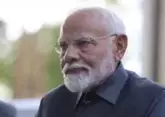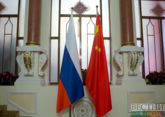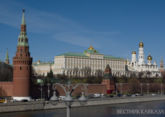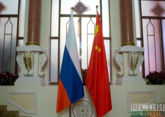Following the Chinese President's visit to Russia, Vladimir Putin and Xi Jinping signed a joint statement on further deepening their comprehensive strategic partnership and strategic cooperation and a joint statement on the current situation in the world and important international problems. In addition, the Action Plan to Implement the Provisions of the Treaty on Good-Neighbourliness, Friendship and Cooperation between the Russian Federation and the People's Republic of China for 2017-2020 was approved. A package of intergovernmental and commercial documents on cooperation in various fields was also signed in the presence of the two Presidents on the sidelines of the visit.

The Director of the Institute of Far Eastern Studies of the Russian Academy of Sciences, Professor of the Ministry of Foreign Affairs of Russia Sergey Luzyanin, commenting on the results of the summit, said that there is no classical ideological or military-political union between Russia and China, there is a strategic partnership: "It is substantive partnership, its agenda is very broad, but it is not an alliance. Each side's hands are free in terms of relations with third powers.The age of classical, rigid military-political alliances is a thing of the past. These are echoes of a bipolar system. The world is moving in the direction of polycentricity and multipolarity".
According to the expert, Putin and Xi Jinping have good personal relations: "Big politics are very subjective and 50% tied to personal relations, which are very trusting and of very high level between Putin and Xi Jinping".

Meanwhile, Sergei Luzyanin believes that Russian-Chinese relations are permeated by geopolitics in all key parameters. Russia and China can positively influence stability and development, including strategic stability, maintaining global and regional security, combating terrorism, known global challenges and threats.
Speaking about economic cooperation, the expert noted that the construction of two bridges across the Amur river has moved forward; there are opportunities and benefits from attracting large Chinese investment projects in the territory of Primorsky Krai and other subjects of the Far Eastern Federal District; as well as joint investment projects in agriculture. "We see an increase in the share of cross-border entities in recent years. In 2015-2016, there was a decline in trade at both the federal and cross-border levels. It was due to fluctuations and devaluation of the ruble, a drop in oil prices and other reasons. But 2017 shows a very good trend: the first quarter of Russian-Chinese trade recorded 26.5% growth. This trend continues to increase, that is, based on the current indicators, it is possible that we will reach $85 billion, and maybe even $90 billion by the end of 2017 from a $65 billion failure of 2015 and 2016. This is an overall figure," Luzyanin said.

According to him, Russia's good option for export of agricultural products is being formed at the expense of the Siberian and Far Eastern regions: grain, soybeans, seafood, livestock: "Their environmental friendliness makes them attractive. Although there are some shortcomings here. The distribution is not fully established by Russian companies in China, there are certain inconsistencies in logistics. It is necessary to bring Russian products to Chinese consumers through their own or joint intermediary firms. E-commerce has increased. This is just the beginning".

The bilateral summit touched on the regional part, it is a question of projects in the aircraft industry with an eye to the Siberian and Far Eastern regions, in particular the creation of a wide-body long-range jet. "There are several interesting projects of the Silk Road Fund and its investments in Sibur, as well as between Rusal and the Hebei Sense Company. It includes manufacturing of machinery and technical equipment, cables, etc. The threads connecting two huge countries come from the Russian and Chinese regions. We have a good example of the economic interaction in the 'Volga-Yangtze' format. There are fairly diversified supplies," the expert said.

According to him, "if in general, Russian-Chinese trade is passive with respect to China, in 2016, $24 billion out of $65-69 billion of the turnover accounted only for Russian exports, but today we see that this negative Russian balance is declining, the composition of the exports and imports is gradually changing. The leading role here is played by the Siberian and Far Eastern regions".














